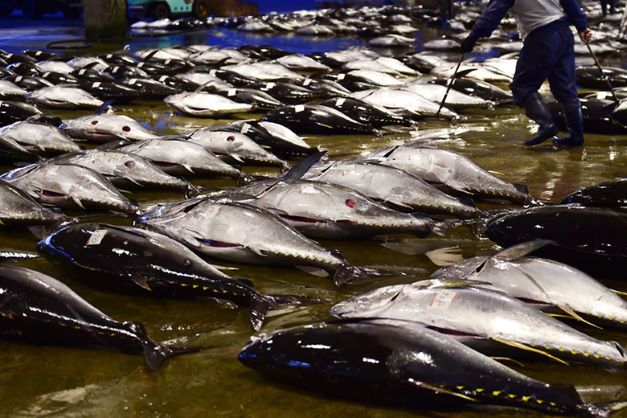
There are eight types of tuna fished in the world: Pacific bluefin tuna (T. orientalis), Atlantic bluefin tuna (T. thynnus), Southern bluefin tuna (T. thynnus maccoyii), Bigeye tuna (T. obesus), Yellowfin tuna (T. albacares), Albacore (T. alalunga), Blackfin tuna (T. atlanticus) and Longtail tuna (T. tonggol).
According to 2019 statistics, approximately 2,280,000 tons of 8 types of tuna were caught that year. Of those, only 1.6 tons per year are Pacific bluefin tuna. Atlantic bluefin tuna only reaches 3.1 tons per year. Southern bluefin tuna is 1.7 tons per year. Yellowfin tuna is 1,579,000 tons per year. Bigeye tuna accounts for 392,000 tons per year. Albacore is 245,000 tons per year. There is some fluctuation from year to year, but the data has remained pretty stable over the past 20 years, except for the Yellowfin tuna. Blackfin tuna catch is extremely how and is not found at sushi restaurants as a topping except Florida. Longtail tuna is no more than a by-catch of other tuna and is the least caught species in the tuna genus.
Of these eight types, the six types used as Nigiri sushi toppings include Pacific bluefin tuna, Atlantic bluefin tuna, Southern bluefin tuna, Bigeye tuna, Yellowfin tuna and Albacore.
We have attempted to lay them out here in order of price. Incidentally, the unit price for Bluefin tuna is more than ten times that of Albacore.
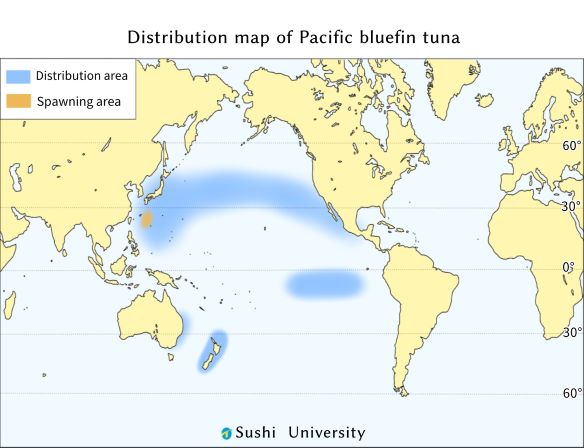
The statistics categorize Pacific bluefin tuna and Atlantic bluefin tuna separately, but Japanese sushi restaurants do not distinguish the two. In other words, the menu does not read “Pacific bluefin tuna”. Not only that, the menu actually only lists “Tuna,” so in that case you can assume it is either Bluefin tuna, Southern bluefin tuna or Bigeye tuna.
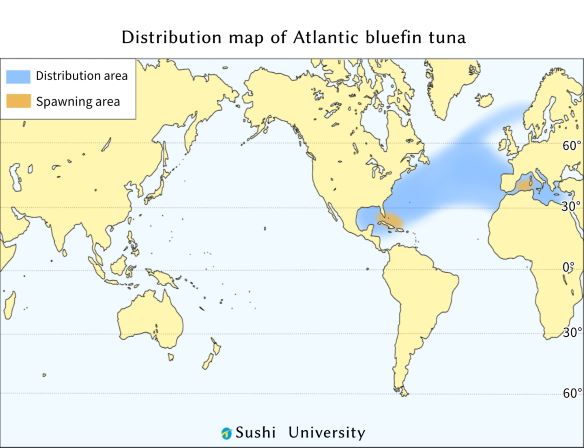
Those in the industry at the Toyosu Market refer to Atlantic bluefin tuna as “Jumbo”. This is the nickname for Tuna imported from Boston and Ireland into Japan. This also makes it clear that it is not the Pacific bluefin tuna fished in Japan’s local sea waters. Southern bluefin tuna is mainly caught in the Indian Ocean and flash-frozen to negative 60℃ before being distributed all over the world. The majority of Bigeye tuna, Yellowfin tuna and Albacore are also frozen and distributed.
When the Tuna a sushi restaurant is serving is Bluefin tuna, the chef wants to emphasize that, so he or she may drum up conversation with, “We got some good Bluefin tuna in today.” Incidentally, Bluefin tuna is also called “Hon-maguro”. In Japanese “Hon” is short for “Honto,” which means “Real.” In other words, this implies that other Tuna is not the real thing.
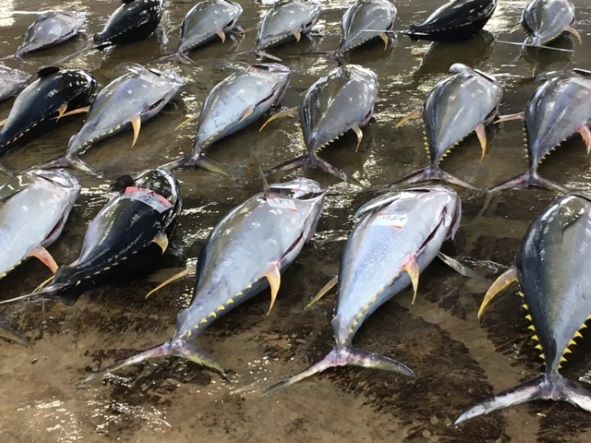
Yellowfin tuna is generally served at Kansai sushi restaurants, but not at Tokyo sushi restaurants. This is due to differences in Kansai and Kanto food cultures. The Ahi often consumed in Hawaii is Yellowfin tuna. Tuna caught in the inshore waters of Micronesia is either Yellowfin tuna or Bigeye tuna.
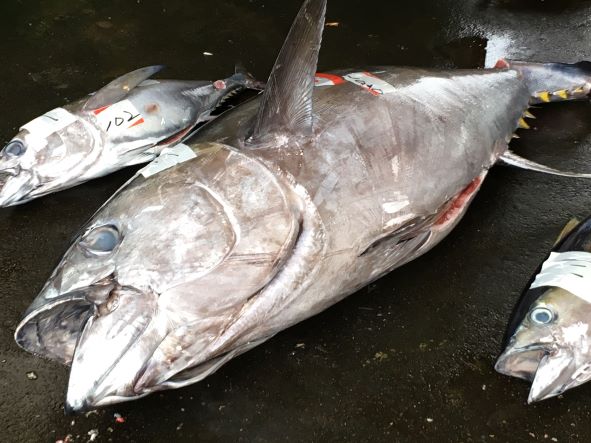
Yellowfin tuna and Bigeye tuna are often used for take-out sushi. If Bluefin tuna is used, this will be indicated with a label on the package making it clear that it, “Includes Bluefin tuna.” That is how expensive and delicious Bluefin tuna is. However, in this case you can be sure that the Bluefin tuna came frozen and was farmed. Also, depending on when it was fished, the akami (red meat) of the Bigeye tuna caught in the inshore of Japan are nearly on-par with the akami Bluefin tuna. Bigeye tuna is the most-consumed Tuna as Sashimi in Japan.
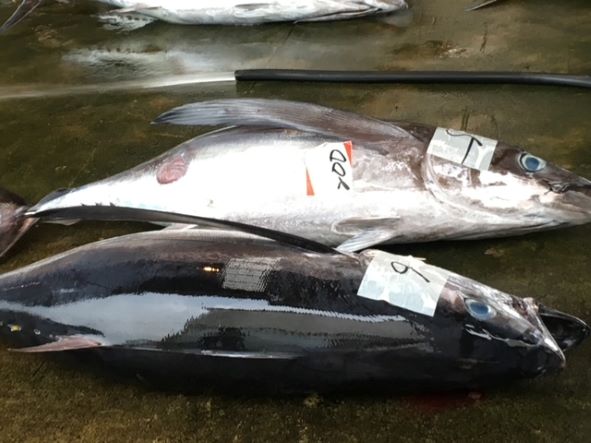
Albacore is often served at conveyor belt sushi. Bintoro is especially popular. Bintoro is the name for the Toro part of Albacore. The meat is whiter than that of Bluefin tuna and the fat is known for being lighter.
In conclusion, you may have never been aware of the types of Tuna consumed at sushi restaurants. The types of Tuna that go better with spicy sauces are generally Yellowfin tuna and Albacore. For the same reason, Yellowfin tuna and Albacore are often used in Sushi rolls. But when made into Nigiri sushi, you can’t help but to be conscious of the type of tuna because the flavor and aroma are apparent. Also, when Bluefin tuna is served raw, you can expect top-level fragrance.
[sc_apply url=”https://sushiuniversity.jp/apply/”]
We hope this information will be helpful.

Revision date: January 11, 2023
Share this article
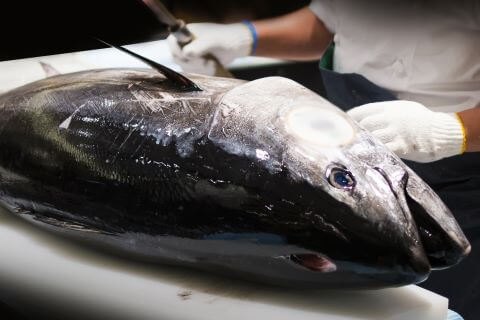 There are three elements that make good quality Kuromaguro(Bluefin tuna).
There are three elements that make good quality Kuromaguro(Bluefin tuna).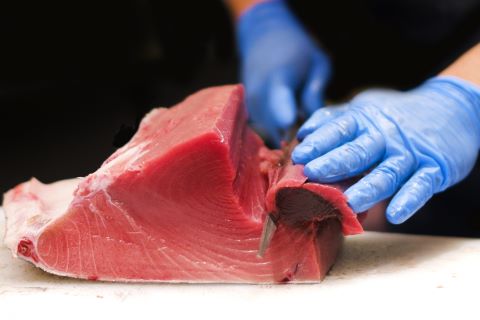 First of all, color does not simply refer to the color of the cross-section when the fish is cut with a butcher knife.
First of all, color does not simply refer to the color of the cross-section when the fish is cut with a butcher knife.